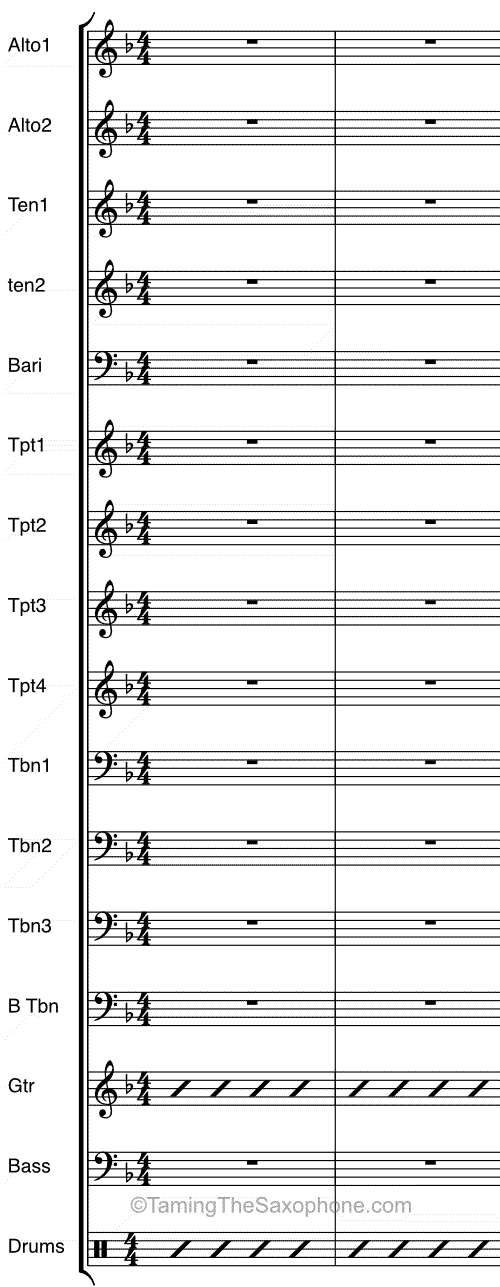What’s The Score?
First things first – the title should be at the top center of page one and the name of the composer and arranger on the right. It is a good idea to indicate whether the score is transposed or not (on the left). Individual groups of instruments or sections (e.g. Brass, strings, saxophones, choir) are bracketed together down the left hand side of the staves, on every page. The names of the instruments are written to the left of each stave on the first page. There are conventions as to the order in which the instruments appear from the top of the score, e.g.:
Orchestra
- Woodwind
- Brass
- Percussion (Timpani, non-pitched, pitched
- Keyboards etc
- Strings

Jazz Orchestra (Big band)

- Saxes (Woodwind)
- Trumpets
- Trombones
- Rhythm section
Each family of instruments is given its own staff. Where there are more than two parts to a staff, two or more staves may be used. Clarity is very important at this stage especially if your score is to be copied into individual parts by a copyist, who must be able to understand your intentions. Three or four instruments playing block
chords may be written on one staff, but where complex polyphony would make this difficult for the copyist to decipher use another staff. A good rule is to imagine that you didn’t write the score, then imagine yourself having to copy the score onto individual parts. When writing for an unconventional line up it will probably help you to put the highest instrument at the top of the score and work down the page to the lowest, while keeping the rhythm section at the bottom. Notes and rests should be written so that each beat is vertically aligned on different parts.
Planning the Score
Useful tips:
- Make a rough sketch of the arrangement. E.g. intro, statement of theme, backings, counterpoint, solos, ensemble passes, modulations, restatement of theme, climax, coda. Decide on instrumentation for various sections and choose keys appropriate to the instruments. Use the ideas we mentioned for composition regarding unity and variety. Having planned the entire arrangement don’t be frightened to change as you go along if you feel inspired.
- Fill in the melodic lines and make a note of the harmony in chord symbols throughout. With vocal scores fill in the vocal line and lyric. (The latter is more important than it first appears as you may wish to make a musical comment on certain words)
- The same ideas regarding variety and unity that apply to composition can also apply to your arrangement whether it’s an entire symphony or an improvised jazz arrangement. Just as we think of the melody creating and releasing tension the shape of the entire arrangement can do this as well. For instance we can think of repeated verses building tension and a chorus bringing release. In the case of jazz arrangements the composer will often rely on an improviser to develop the material. Here the improvisation is just an extension of composition, the good improviser thinks (either consciously or subconsciously) about building and releasing tension, repetition and development of ideas.